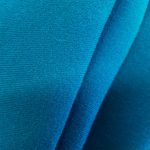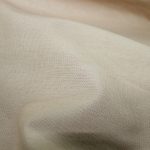Sports fabrics are technical materials which help to keep the wearer comfortable during exercise. The type of fabric required will depend upon the intensity of the exercise and the activity. Yoga clothing should use fabrics with good stretch ability for easy movement which will likely require the fabric to be of a knitted construction. Apparel for long distance running will keep the wearer in good comfort if it has excellent moisture wicking properties to enable sweat to transfer from the inside to the outside for the garment. Performance clothing for outdoor sports in the winter or snow sports ought to use breathable fabrics with very good insulating properties.
Sport fabric properties
Thermal Insulation
Fabrics with good thermal conductivity are not good insulators, therefore these fabrics will be cooler to wear. Air is one of the worst conductors of heat which is why the more still air a fabric can trap, the warmer it will keep you.
Wicking
Wicking is the transport of moisture through a fabric. Moisture can pass between fibres, yarns and through the fibre itself. The ability for moisture to pass through a fabric will depend on the fabric construction and the fibre type. Synthetic fibres tend to dry quickly and are the most commonly used fibre in athletic wear now.
Water Vapour Transmission
When high intensity exercise takes place, sweating will occur to evaporate heat off the skin. If clothing is not breathable than there is nowhere for the moisture to escape. This causes moisture to build up inside the garment and on the skin resulting in the body getting hotter. Another consequence is when exercise decreases and heat stops being generated from the body, the moisture (which is less insulating than still air) will then increase heat loss rapidly, especially in a cold environment. From this we can conclude that clothing needs to prevent rain and wind from getting in but at the same time allow moisture from the inside to escape out. This process is known as water vapour transmission and fabrics which are able to do this are known as waterproof breathable fabrics.
Sports fabrics
Lycra
Lycra is Du Pont’s brand name for elastane. It is a synthetic fibre which is always combined with another fibre in a fabric. Lycra is not used as the majority fibre for the reason being that even a small amount (as little as 2 percent) can provide considerable stretch and give fabric a better drape. Lycra is renowned for its ability to be stretched four to seven times its original length and will still return to its normal state and length when released. Other admirable properties of Lycra include its resistance to sunlight, sweat and improvement of comfort, ease of movement and shape retention when used in a fabric. Lycra by itself looks like a continuous filament, yet actually contains lots of tiny filaments put together, which are made up of stretchy and rigid molecules to make it both soft and strong. Elastane can also be used in sportswear for compression garments which are used to improve blood circulation, reduce lactic acid and DOMS and it can also be used to help hold a garment up. When considering buying Lycra, heavier weight Lycra fabrics will be less see-through when stretched. We supply Lycra fabrics including an 80% Nylon, 20% elastane fabric (KBT117) in lots of brilliant colours. Another fabric we have which is very similar but not as shimmery is PBT (polybutylene terephthalate) (KBT6278). This is a type of polyester with stretch and tactile properties very similar to Lycra. It is also resistant to salt water, chlorine and colour fading which is why this fabric is suitable for swimwear.
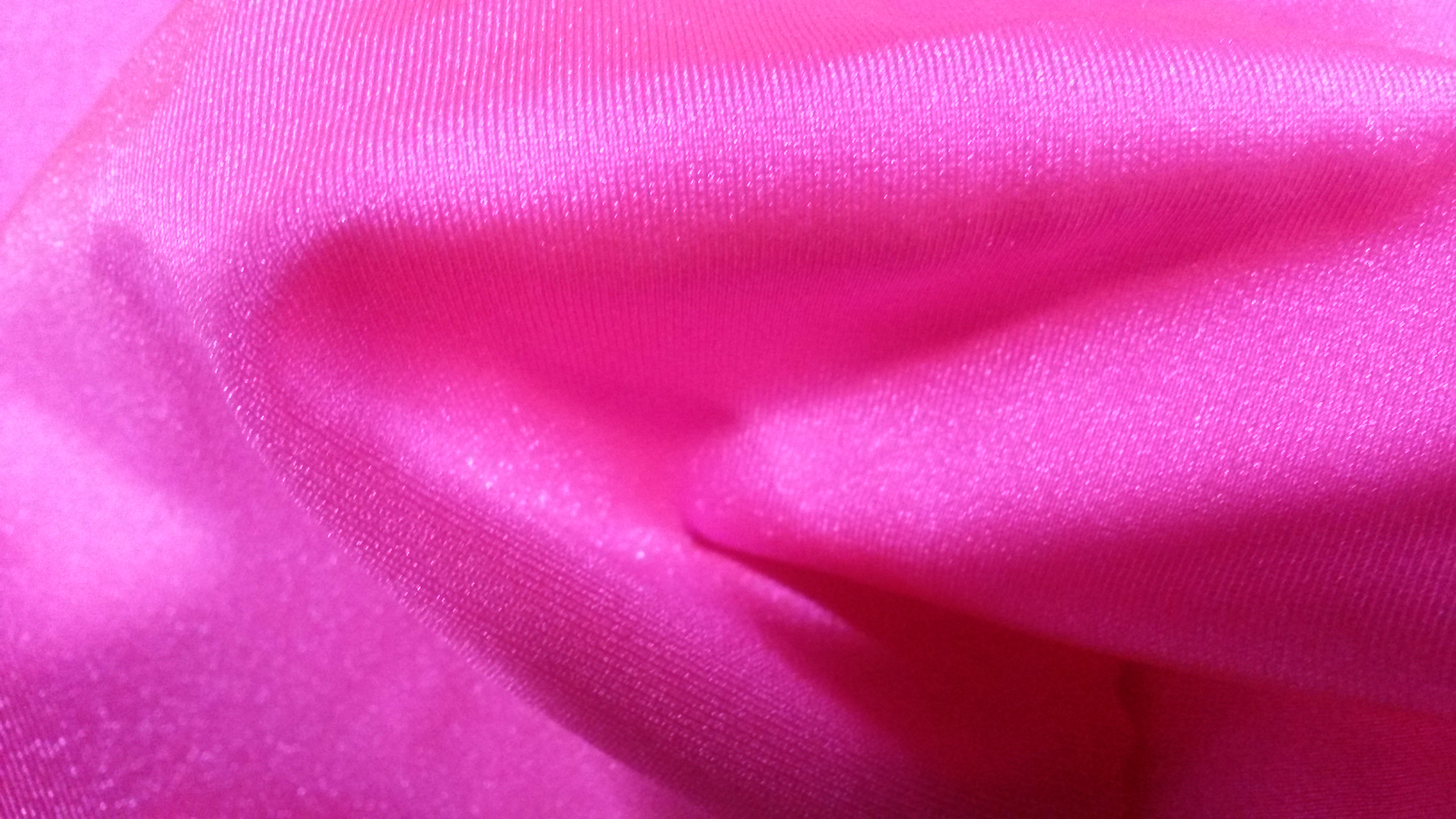

Mesh
Mesh is a fabric which includes a certain amount open spaces; a typical mesh is about 85 percent material and 15 percent holes although different mesh fabrics will vary in weight and hole size. Mesh is beneficial in sportswear as it provides good comfort and stretch and allows air to circulate and reach the skin meaning that it is ideal for ventilation areas of a garment, especially for places where heat accumulates very quickly such as on the back. Featured below is our airtech polyester mesh fabric (KBT6215), ideal for sportswear. Both are the same fabric but with slightly different hole shape.
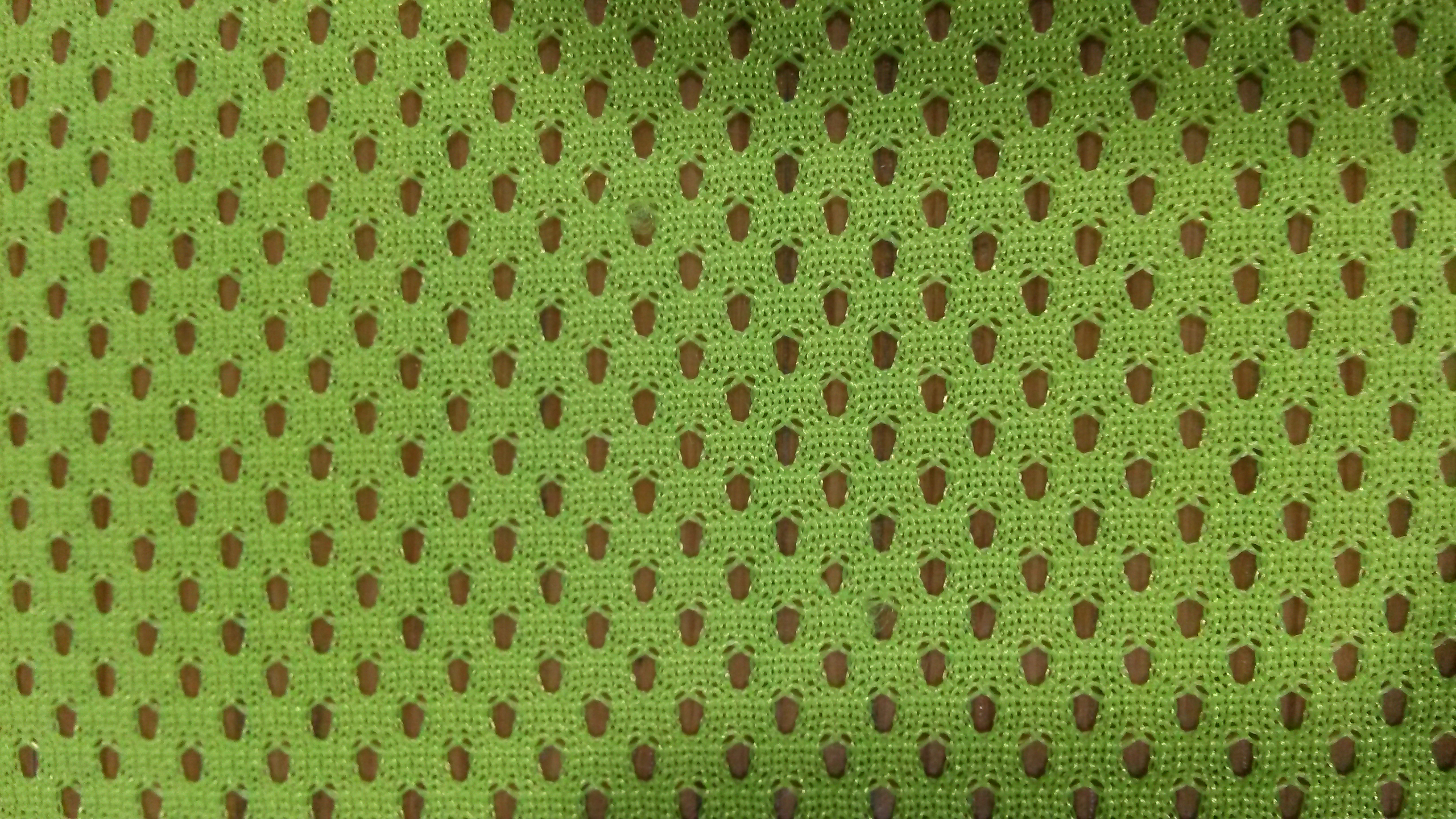
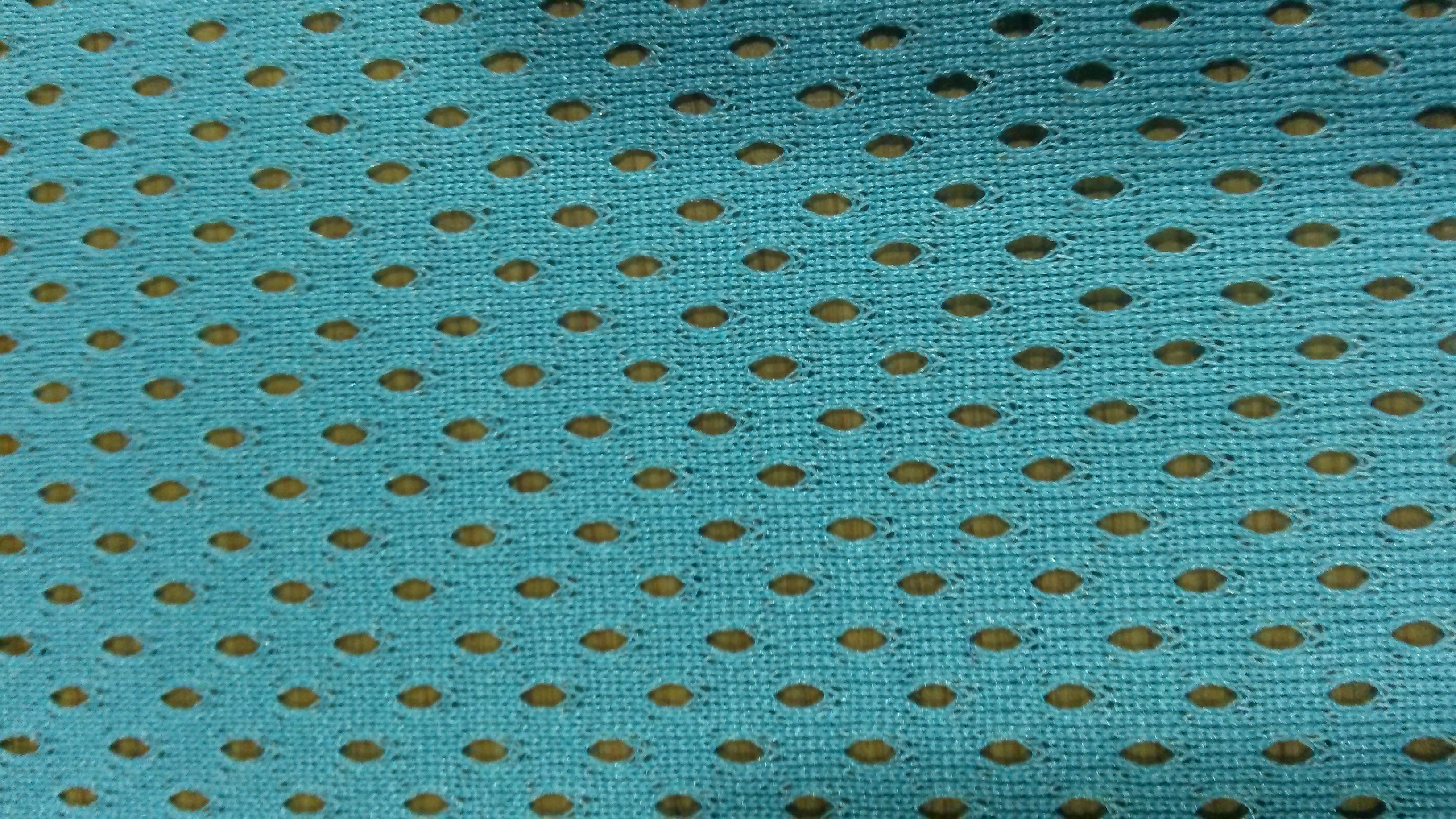

Neoprene
Neoprene is a foam like synthetic rubber made from polychloroprene chemicals. It doesn’t fray, is a good insulator and is water resistant. There are two types of neoprene: open cell and closed cell. Closed cell neoprene is cheaper and is the most common type; it consists of nitrogen filled separated bubbles and allows a small amount of water to pass through which is heated by the body. This type of neoprene is lined and is suitable for people who will stay continually active in the water so that body heat continues to keep the layer of water inside the suit. For very cold conditions and for activities where there is waiting around, open cell neoprene is the appropriate option. Open cell neoprene is raw (unlined), softer and more flexible than closed cell which is rigid and strong. Open cell is made up of interconnected air spaces and works by clinging tightly to the body. It can contain up to 98% still air inside it giving good insulation to weight properties. Open cell is more insulating and depending on the thickness and type, can be used for deep sea diving and for staying in the water all day.
Neoprene is used for water sports and is now very fashionable for casual sporty type clothing and swimwear. Our neoprene (KBT6984) is 2mm thick and the front and back of the rubber is covered with a polyester and spandex material.
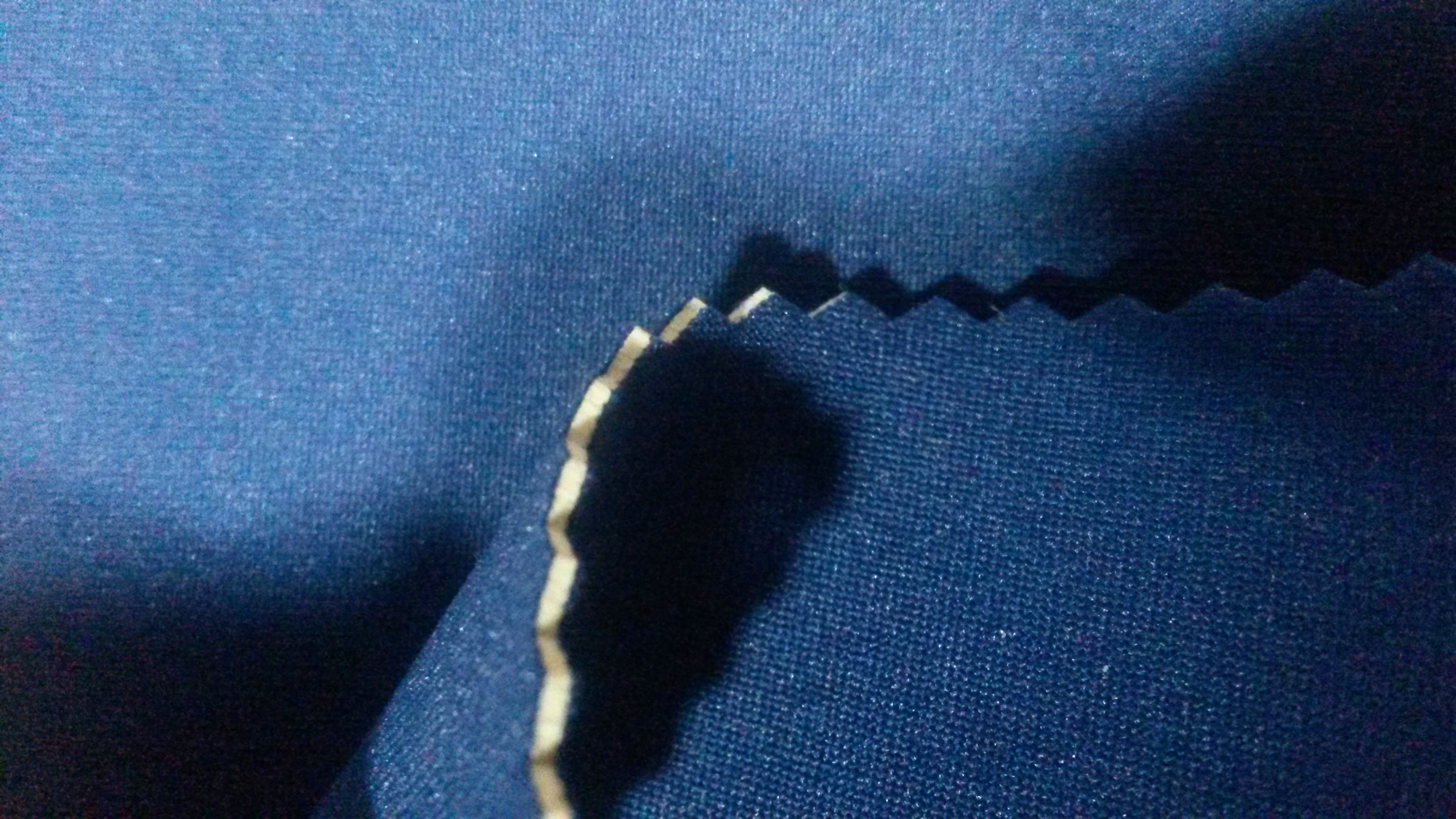
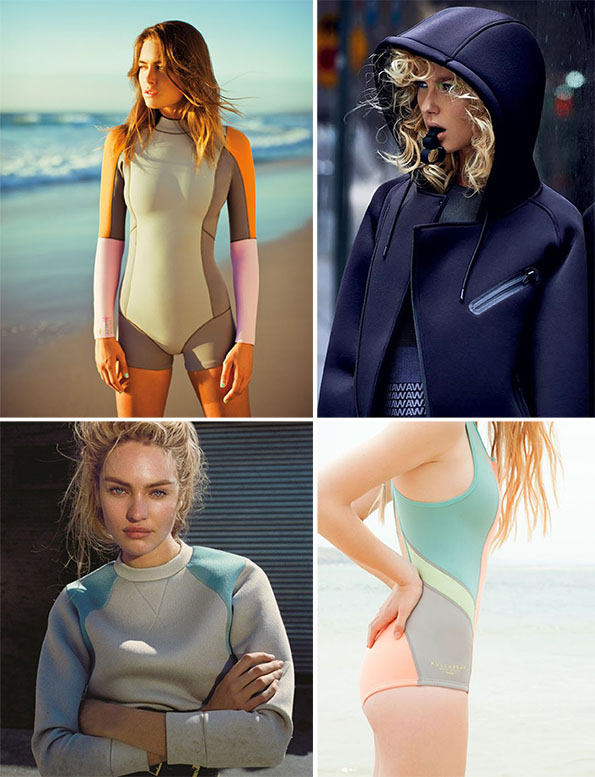
Waterproof
Water resistant fabrics are used in outdoor sports to protect from weather elements. If a fabric is waterproof then it is likely to be wind resistant also. Some fabrics are water repellent meaning that they do not allow the ingress of only a certain amount of water. If a fabric can resist a water pressure of at least 13,000 pascals then the fabric can be classed as fully water proof. PU coating is one way of waterproofing a fabric and is suitable for jackets and tracksuit bottoms.
Below is one of our lighter weight water resistant fabrics. This 100% polyester 4oz fabric (KBT1859) has a polyurethane coated back and is ideal for water proof clothing such as raincoats and jackets.
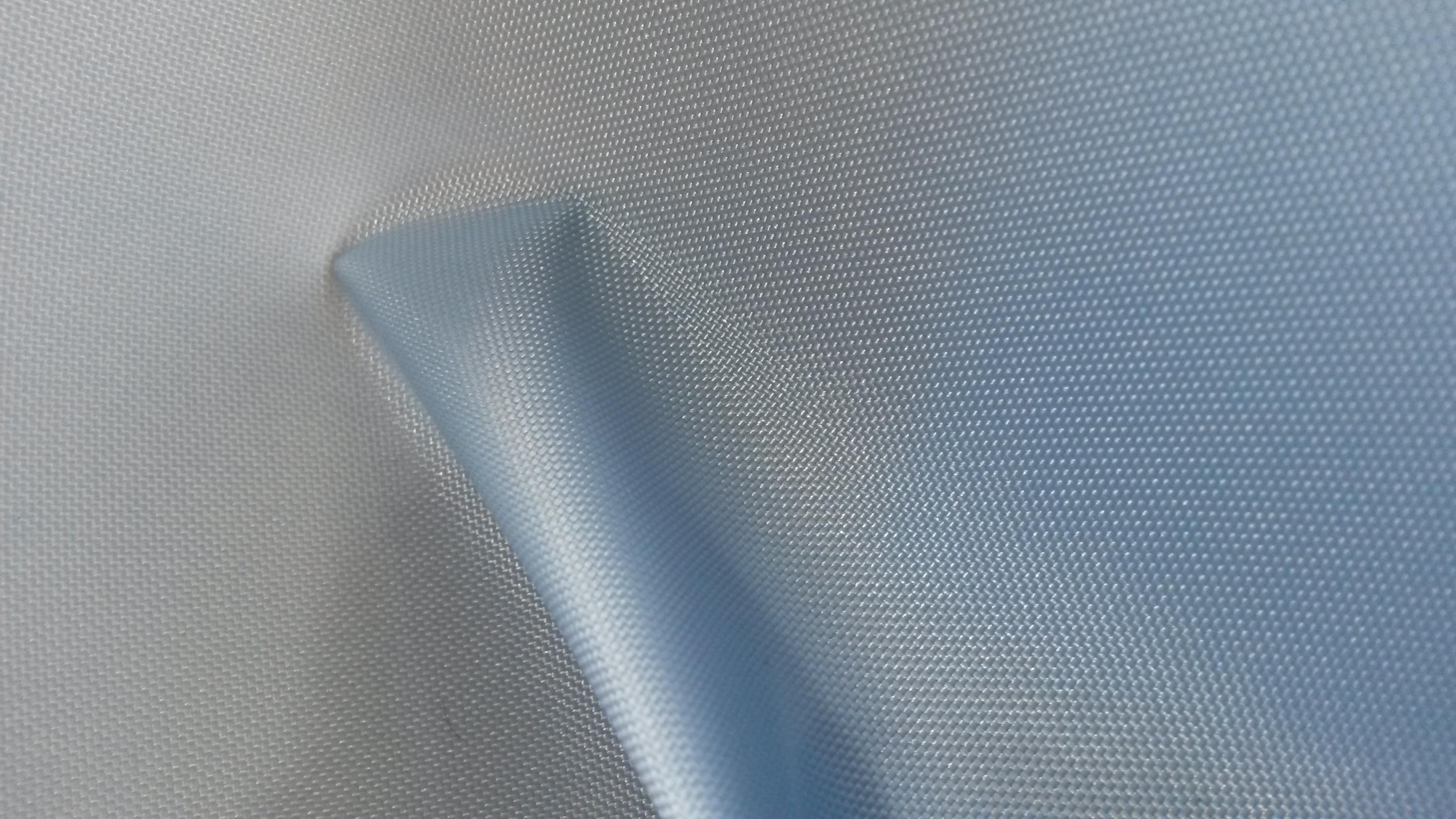
Micro fibre
Micro fibre fabrics are essentially fabrics made from extremely fine fibres. A fabric can be classed as a microfibre if its fibres have a linear density of less than 1 denier. You can make a comparison of how fine this actually is when you think of how thin 15 denier tights are and therefore how small 1 denier is in comparison; also a micro fibre is 100 times finer than a human hair! Micofibre fabrics are usually made from polyesters, polyamides or polypropylenes; they are made from manmade fibres because they are so small that natural fibres cannot be this small. The fineness of the fibre means that many more fibres are needed to make up a yarn. Microfibre fabrics make useful luxury sport fabrics due to their all round brilliant properties including being lightweight, having a luxurious drape and are breathable whilst still being resistant to rain and wind. You can order a sample of our polyester microfibre fabric (KBT7706) which is ideal for trench coats and sports jackets.
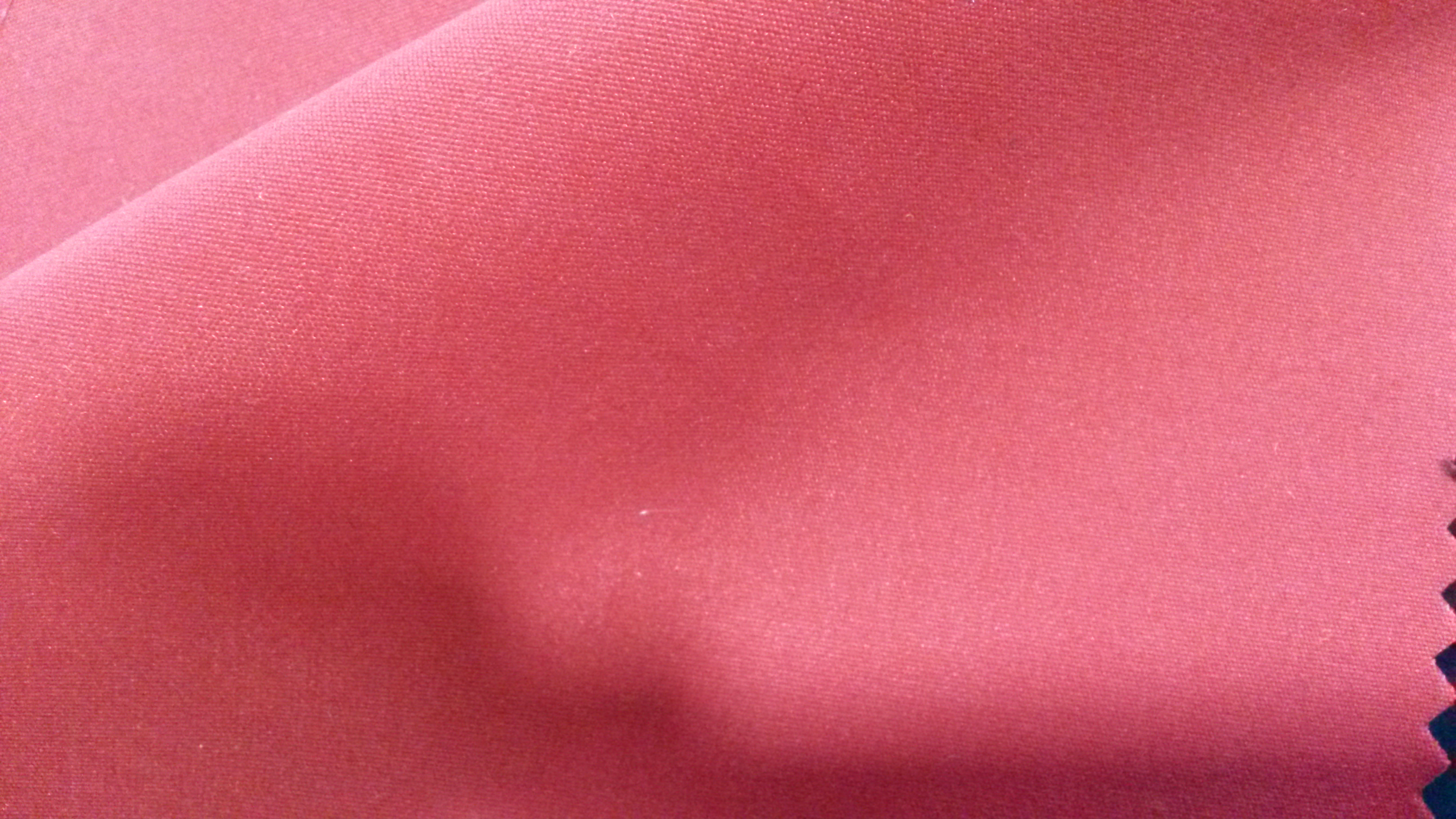
Waddings
These are nonwoven materials made from synthetic continuous polyester filaments and able to trap air between the many fibres. Waddings keep a high air content trapped thus providing superb thermal insulation from the cold. You will find it used between the outside fabric and the lining fabric of a garment. Our water resistant quilted fabric (KBT5655) has synthetic wadding quilted to a water resistant outer fabric, when constructing a garment from this material a lining fabric of your own choice can be used for the inside. We also stock waddings by themselves including 2oz, 4oz and 6oz.

Sports fleece
There are a few variations of fleece which come in different weights and have different naps, some longer or more textured than others. The fabric pile traps a lot of still air making it an insulating fabric. Fleece fabrics are used in sportswear often for tracksuits, hoodies and zip tops. The fabric does not fray making it very easy to sew (unless it is extremely thick) and the grain line runs parallel to the selvedge. Two of our fleece fabrics, practical for sports clothing include (KBT5673) which is a tightly knitted fabric with some ‘give’ to it and has a fine brushed nap. Another is the hoodie fleece fabric (KBT6745) which is similar but slightly stretchier and has a moderately softer and thicker nap.
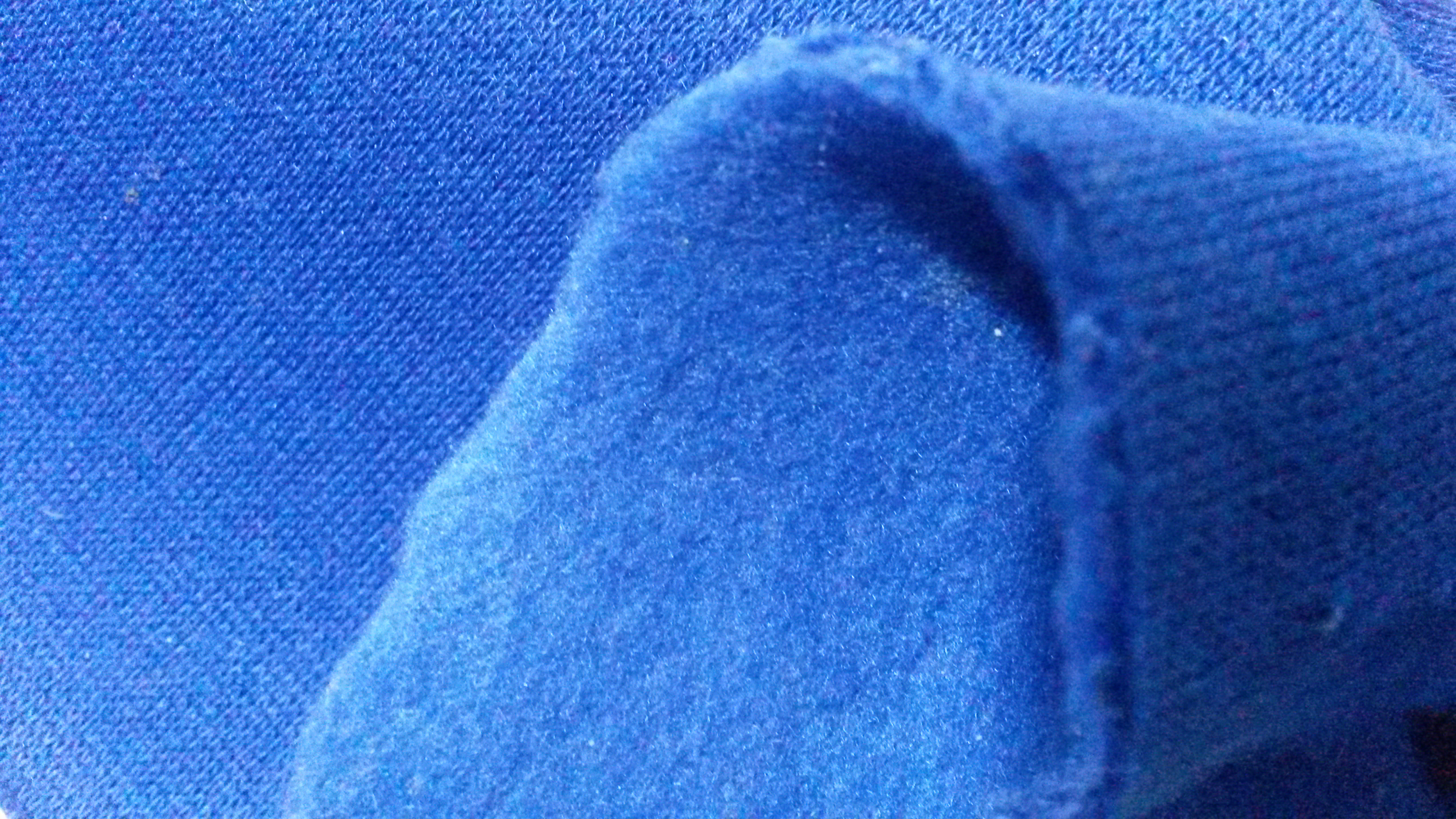

Have you used any of our fabrics for sportswear? Comment below to tell us what you think!
<a href=”http://www.bloglovin.com/blog/13496297/?claim=erw7hswm4wy”>Follow my blog with Bloglovin</a>



